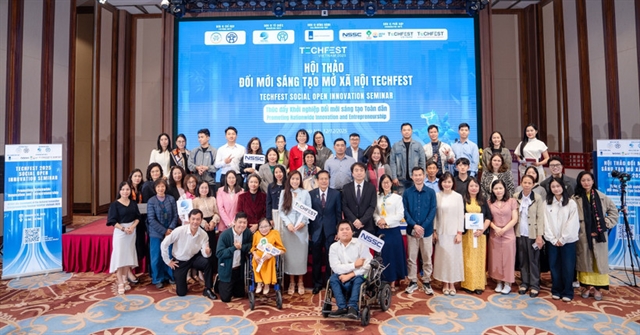 Life & Style
Life & Style


|
| An overview of Hữu Liên Commune in Lạng Sơn Province where people can stay and work with local people. VNA/VNS Photos Lê Phú |
LẠNG SƠN — Hữu Liên Commune in Lạng Sơn Province is transforming its unique limestone landscape, large special-use forests, and rich cultural heritage of 11 ethnic groups into a thriving tourism economy. By developing international-standard homestays and preserving local traditions, the area has boosted income and improved residents’ livelihoods.
The commune’s greatest draw is its stunning natural scenery. Its limestone topography creates valleys that flood seasonally and turn into lush green grasslands in the dry season, with the Đồng Lầm Steppe standing out as a prime example. The setting is ideal for eco-tourism, camping, and photography.
Hữu Liên Mountain Range and Đồng Lầm Lake are key attractions within the Lạng Sơn Geopark, one of UNESCO’s Global Geoparks.
The Mountain Range, located in the Hữu Liên Nature Reserve, is famed for its distinctive karst formations and rich biodiversity. Its dramatic limestone peaks and seasonally flooded valleys support a rare and valuable ecosystem.
Meanwhile, Đồng Lầm Lake is often described as an 'inland Hạ Long Bay' for its tranquil beauty. Green karst mounds and hills rise from the water, creating a striking panorama. The lake and surrounding area host abundant flora and fauna, including numerous bird species and free-roaming horses grazing along the banks.
Adventure tourism is also flourishing, with mountain climbing drawing more than 25,000 domestic and international visitors each year.

|
| Tourists take part in a mountain climbing class when visiting Hữu Liên Commune. |
To meet rising demand, many families in Hữu Liên Commune have opened homestays and developed community-based tourism, creatively showcasing the rich cultural heritage of ethnic minorities.
Among these businesses, five households forming a homestay cluster won ASEAN Homestay Awards, while Hữu Liên itself received the ASEAN Community Tourism Award at the ASEAN Tourism Forum (ATF 2025).
The homestays offer comfortable accommodation while preserving and promoting the traditional stilt-house architecture of the Tày and Nùng peoples. Visitors can immerse themselves in local life, experiencing indigenous lifestyles firsthand.
Guests can explore typical living spaces, join daily activities with residents, help prepare traditional cuisine and visit nearby mountains and forests. Folk cultural activities such as Páo Dung and Then singing, traditional dances and local customs are also maintained and shared through village gatherings and festivals.
Head of Áng Village Lê Văn Quý said he was eager to operate a homestay, which brought his family higher income than traditional farming.
To expand their businesses, homestay owners have upgraded facilities and services and actively partnered with travel companies to attract more visitors.
The effective combination of cultural heritage and community-based tourism has delivered significant results. Between 2020 and 2025, Hữu Liên welcomed over 186,000 visitors, generating revenue of more than VND52.11 billion (US$2 million), and contributing substantially to improving local living standards.
With the aim of developing tourism into a leading economic sector, Hữu Liên plans to host 210,000 tourists by 2030, generating revenue of VND67.2 billion.
Local authorities are committed to mobilising resources, attracting investment in infrastructure, and promoting the application of information technology.
Crucially, officials and residents have pledged to develop tourism in harmony with environmental protection and cultural preservation, ensuring sustainable growth, safeguarding local identity, and delivering long-term benefits for the community. — VNS




